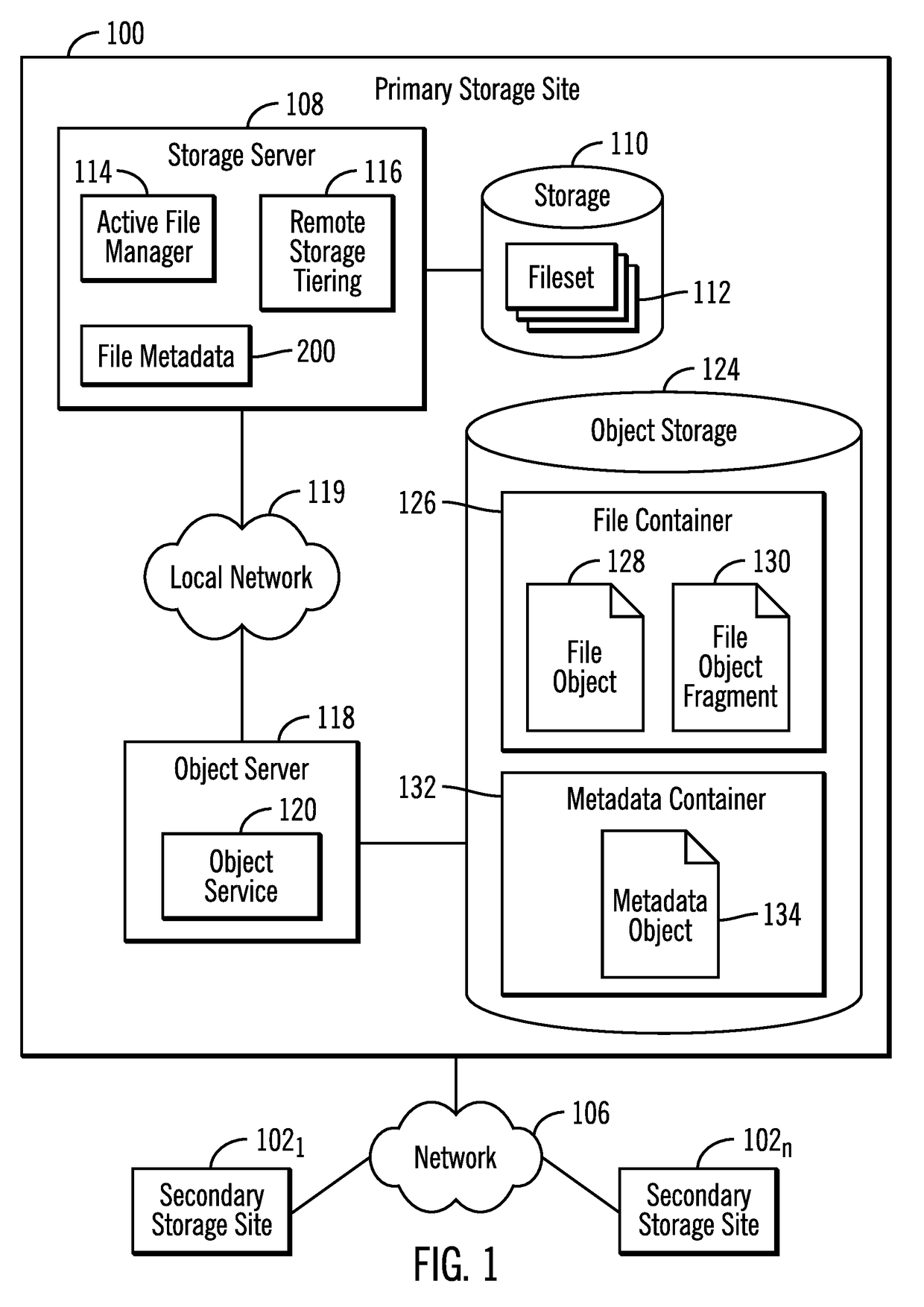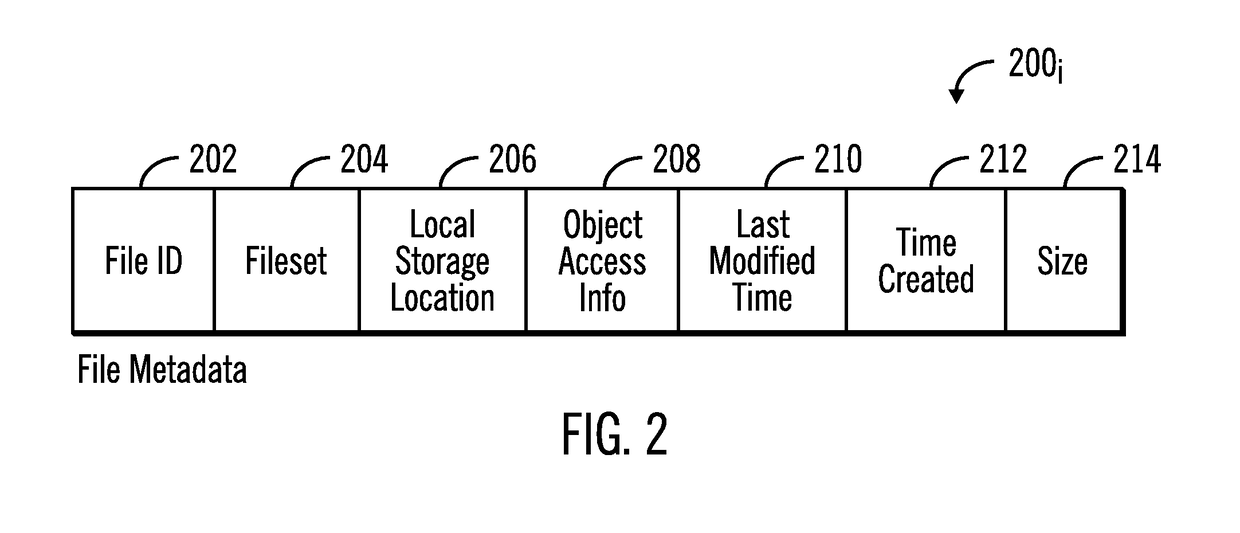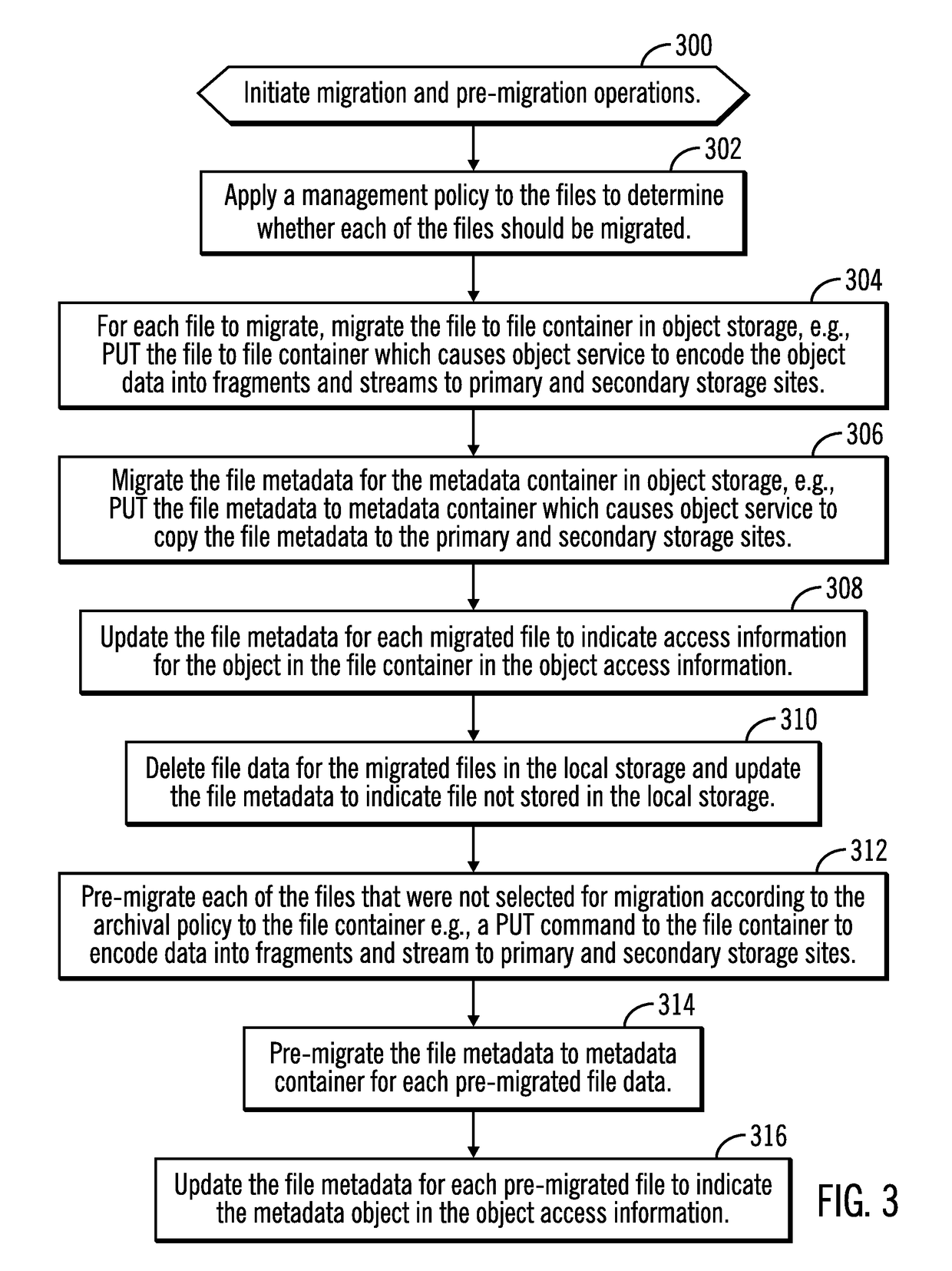Replicating and migrating files to secondary storage sites
a file and storage site technology, applied in the field of computer program products, systems and methods for replicating and migrating files to secondary storage sites, can solve the problem that the metadata format of the object having the file may not be large enough to store the full file metadata, and achieve the effect of conserving network bandwidth
- Summary
- Abstract
- Description
- Claims
- Application Information
AI Technical Summary
Benefits of technology
Problems solved by technology
Method used
Image
Examples
Embodiment Construction
[0022]Disaster recovery systems, such as the International Business Machines (IBM) Active File Management (AFM) Asynchronous Disaster Recovery (AFM DR), perform asynchronous fileset level replication to secondary sites for disaster recovery purposes. The primary site is a read-write fileset where the applications are currently running and have read-write access to the data. The secondary site is read-only. All the data from the primary site is asynchronously synchronized with the secondary site. The primary and secondary sites can be independently created in storage and network configuration. After the sites are created a replication relationship may be established between the two filesets.
[0023]In addition to the AFM-DR asynchronous synchronization, the disaster recovery system may migrate less frequently used or “cool” files to cloud object storage. After the cloud tiering, such as the IBM Transparent Cloud Tiering, only stubs are present on the file system, and when the stubs are...
PUM
 Login to View More
Login to View More Abstract
Description
Claims
Application Information
 Login to View More
Login to View More - R&D
- Intellectual Property
- Life Sciences
- Materials
- Tech Scout
- Unparalleled Data Quality
- Higher Quality Content
- 60% Fewer Hallucinations
Browse by: Latest US Patents, China's latest patents, Technical Efficacy Thesaurus, Application Domain, Technology Topic, Popular Technical Reports.
© 2025 PatSnap. All rights reserved.Legal|Privacy policy|Modern Slavery Act Transparency Statement|Sitemap|About US| Contact US: help@patsnap.com



